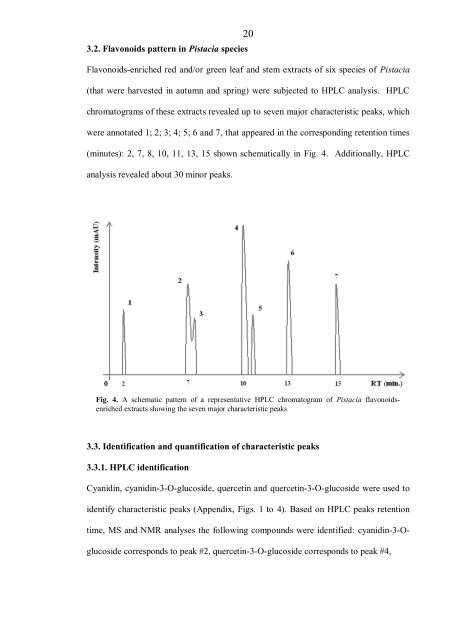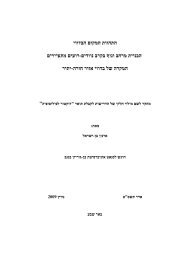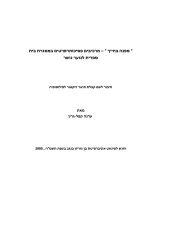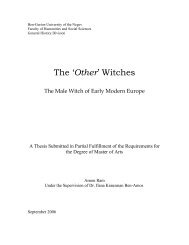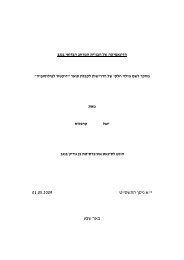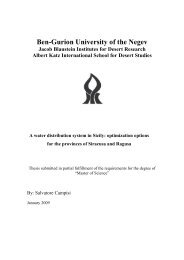Ben-Gurion University of the Negev
Ben-Gurion University of the Negev
Ben-Gurion University of the Negev
Create successful ePaper yourself
Turn your PDF publications into a flip-book with our unique Google optimized e-Paper software.
3.2. Flavonoids pattern in Pistacia species<br />
20<br />
Flavonoids-enriched red and/or green leaf and stem extracts <strong>of</strong> six species <strong>of</strong> Pistacia<br />
(that were harvested in autumn and spring) were subjected to HPLC analysis. HPLC<br />
chromatograms <strong>of</strong> <strong>the</strong>se extracts revealed up to seven major characteristic peaks, which<br />
were annotated 1; 2; 3; 4; 5; 6 and 7, that appeared in <strong>the</strong> corresponding retention times<br />
(minutes): 2, 7, 8, 10, 11, 13, 15 shown schematically in Fig. 4. Additionally, HPLC<br />
analysis revealed about 30 minor peaks.<br />
Fig. 4. A schematic pattern <strong>of</strong> a representative HPLC chromatogram <strong>of</strong> Pistacia flavonoidsenriched<br />
extracts showing <strong>the</strong> seven major characteristic peaks<br />
3.3. Identification and quantification <strong>of</strong> characteristic peaks<br />
3.3.1. HPLC identification<br />
Cyanidin, cyanidin-3-O-glucoside, quercetin and quercetin-3-O-glucoside were used to<br />
identify characteristic peaks (Appendix, Figs. 1 to 4). Based on HPLC peaks retention<br />
time, MS and NMR analyses <strong>the</strong> following compounds were identified: cyanidin-3-O-<br />
glucoside corresponds to peak #2, quercetin-3-O-glucoside corresponds to peak #4,


